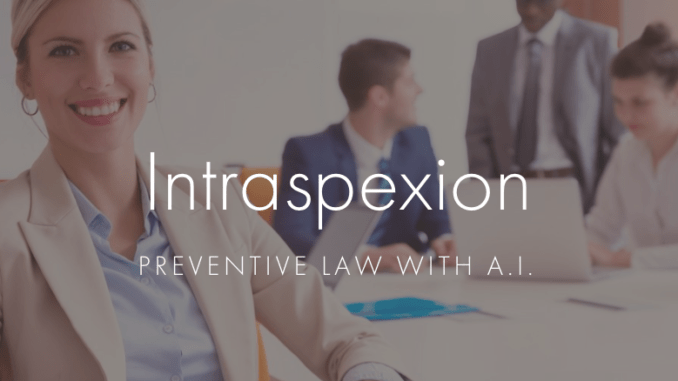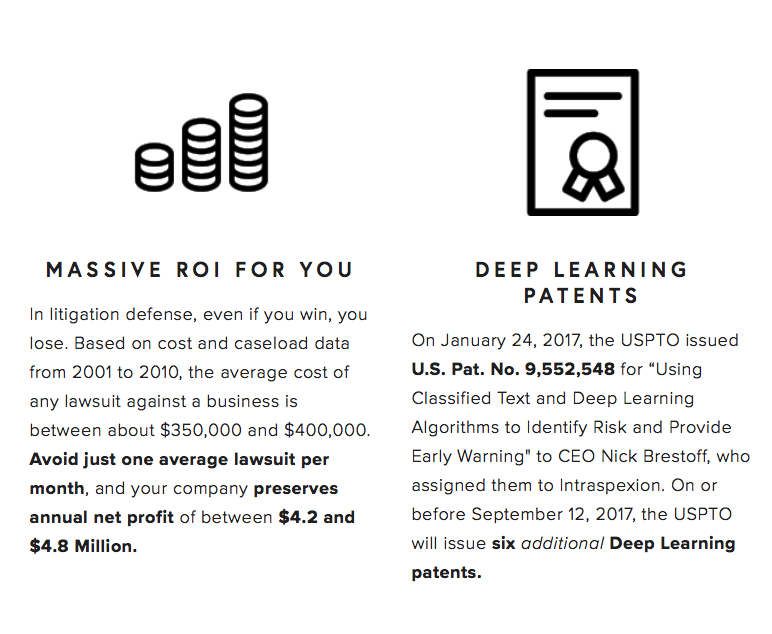
Legal AI start-up Intraspexion has announced that the US Patent & Trademark Office has granted the company seven deep learning patents for its pioneering legal risk early warning system.
The company notes that deep learning is the most popular emerging branch of AI and that this machine learning technology will help it to identify risk-laden communications that could result in a lawsuit.
As explored by Artificial Lawyer in December, in simple terms the AI system is trained to spot certain types of written content that may reveal conduct that breaches the law or internal company guidelines, e.g. in relation to employment rules. A key target in terms of content that would be analysed is internal emails where employees may be creating situations that could lead to law suits.
In effect, in a ‘Minority Report’-like way, the deep learning system is seeing a potential law suit before it happens. Inhouse lawyers are notified and the situation can be addressed before things escalate, or before a potential claimant may be aware of a potential issue. In short, the AI system is designed to prevent litigation before it starts and allows the company to address the issue and solve it internally.
This is especially interesting to large corporates and financial institutions, given that several lawyers have mentioned to Artificial Lawyer in the last 12 months that what they would like to see in terms of AI application is a tool that stops legal problems occurring before they happen, rather than helping to solve them afterward.

Brestoff added that his system offers the promise of a step reduction in litigation-related legal fees for its users, i.e. it could be seen as reducing total legal spend, not just spotting risk.
‘Our system is functional. The pre-trained deep learning model operates on internal enterprise communications, such as email to find the risky needles that lead to litigation, in an enormous haystack,’ he added.
Intraspexion’s patents contain 120 claims and cover implementations of deep learning to identify general risk; two related patents for medical risk, entertainment risk, contract drafting risks, plus the risk of product defects; and one patent to support the identification of financial advantages like R & D tax credits.
2 Trackbacks / Pingbacks
Comments are closed.